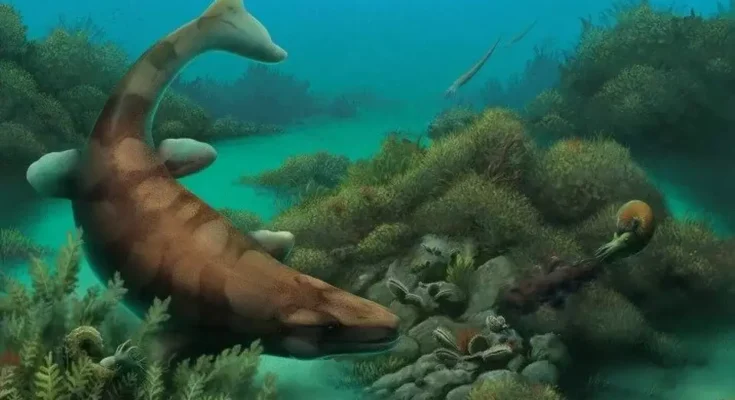The rare bones of an ancient sea monster dating back 80 million years ago were recently unearthed in northeast Texas. In 2023, a private fossil hunter discovered the jaws belonging to Globidens alabamaensis, a 20-foot-long mosasaur, within an 8-inch-thick deposit rich in fossils, according to a report by LiveScience. They were found in the Ozan Formation, embedded in the North Sulphur River channel near Ladonia, Texas.
Twelve teeth are preserved in one of the nearly complete jaws, while the other has only six present. Two isolated root teeth were also found. The teeth are only an inch long. Details about the discovery were published in the Journal of Paleontological Sciences on Aug. 14.
While mosasaurs lived alongside dinosaurs, the aquatic predators were not dinosaurs and were instead closely related to snakes and lizards. Unlike most masosaurs, the teeth of Globidens alabamaensis were blunt and rounded instead of sharp, allowing them to crush the tough shells of turtles, mollusks, and the like. The species was discovered in 1912. Scientists believe that the creatures shed their teeth and replace them throughout their lives, just like sharks. During the mosasaurs’s time, most of Texas was underwater, according to Ron Tykoski, director of paleontology and curator of vertebrae paleontology at the Perot Museum of Nature and Science in Dallas.

Globidens is amongst the rarest mosasaurs in North America, with only a handful of the mosasaur’s fossils—mostly consisting of teeth and small jaw fragments—uncovered intact, making the recent finding significant. However, mosasaur fossils have been found in Texas before. In 2022, amateur paleontologist Stephen Kruse stumbled upon the spine of a mosasaur jutting out of a riverbed well while hiking near the fossil-rich North Sulfur River in North Texas. As paleontologists excavated the spine, they also uncovered parts of the mosasaur’s skull and lower jawbones.

